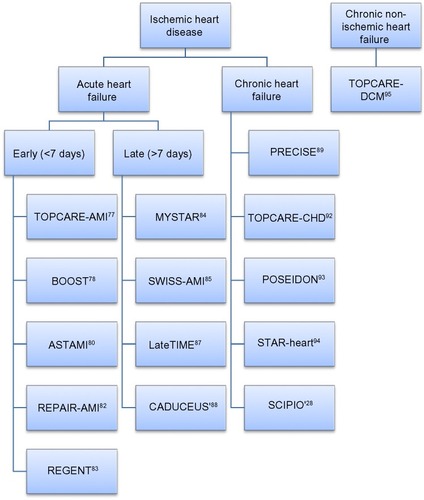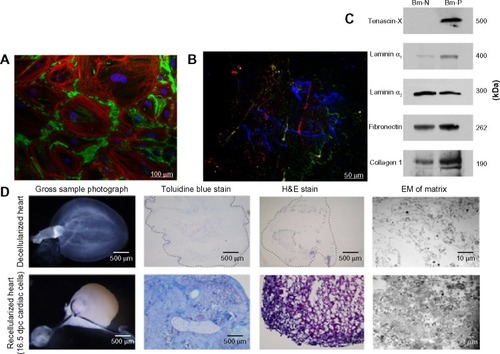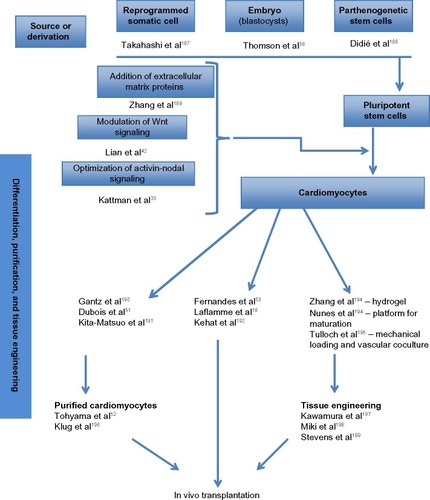Notes: (
A) Synthesis of biomatrix: fibroblasts isolated from samples of adult human heart were cultured in confluent state allowing for extracellular matrix (ECM) deposition in vitro. Representative image obtained by immunofluorescent labeling of actin filaments (red), cell nuclei (blue), and fibronectin (green). (
B) Decellularization of biomatrix: after nonenzymatic removal of fibroblasts, ECM was observed under fluorescence microscope. Its composition was revealed by indirect immunofluorescent staining of representative ECM proteins: collagen IV (red), laminin (green), fibronectin (blue), and tenascin-C (yellow). (
C) Immunoblotting of the decellularized biomatrix further confirmed the presence of these ECM-specific components in the biomatrix. Adapted from: Clotilde Castaldo, Franca Di Meglio, Rita Miraglia, et al., “Cardiac Fibroblast-Derived Extracellular Matrix (Biomatrix) as a Model for the Studies of Cardiac Primitive Cell Biological Properties in Normal and Pathological Adult Human Heart,”
BioMed Research International, vol. 2013, Article ID 352370, 7 pages, 2013. doi:10.1155/2013/352370.
Citation210 (
D) Decellularization of embryonic cardiac tissue and recellularization with E16.5 ventricular cells. The constructs create a favorable microenvironment for the cells to integrate and migrate on the scaffold. Macroscopic appearance of the supporting matrix changed from translucent to opaque following cell inclusion into the construct. This was further confirmed by hematoxylin and eosin (H&E) and toluidine blue staining of the reseeded scaffolds, revealing a highly cellular environment on the host matrix. Collagen structures also became more physically compact after incubation of the scaffold with the cells, as shown by electron microscopy (EM). Adapted from Cree Chamberland, Almudena Martinez-Fernandez, Rosanna Beraldi, and Timothy J. Nelson, “Embryonic Decellularized Cardiac Scaffold Supports Embryonic Stem Cell Differentiation to Produce Beating Cardiac Tissue,”
ISRN Stem Cells, vol. 2014, Article ID 625164, 10 pages, 2014. doi:10.1155/2014/625164.
Citation211Abbreviations: Bm-N, biomatrix from patient with a normal heart; Bm-P, biomatrix from patients with heart failure; dpc, day post conception.



